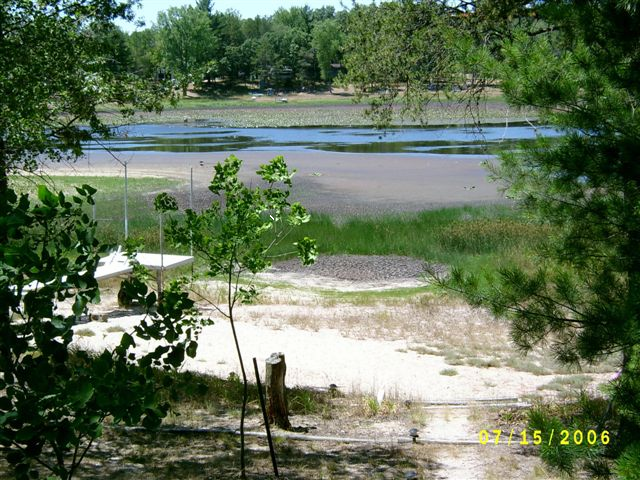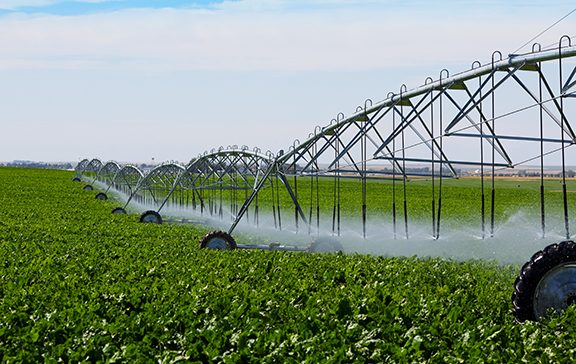By: Evan Feinauer, Staff Attorney

As the Wisconsin State Journal reported on October 29th, DNR records uncovered by Clean Wisconsin reveal a continued threat from high capacity wells to our precious groundwater resources.
Since the Attorney General issued an erroneous legal opinion stripping DNR’s groundwater experts of much of their authority to review high capacity well permits in 2016, the DNR has stopped looking at the impact these industrial-sized wells are having on waterways. Over the summer, Clean Wisconsin reviewed high capacity well permits recently issued by DNR and found that new wells are being approved—with little to no review of environmental impacts—next to waterways that DNR acknowledges are already significantly impacted by existing wells.
We know those waters are already impacted by high capacity wells because we won a lawsuit proving it. You may recall that in October 2017 a circuit court judge ruled in Clean Wisconsin’s favor, agreeing that DNR broke the law when it issued permits for high capacity wells it knew would harm trout streams, and invalidating those permits. The permits Clean Wisconsin reviewed this summer all came after this ruling.
It is disappointing to see permits being issued that allow groundwater to be pumped in the same problematic locations, harming the exact same waterways, and in some cases pumping even more water. Attorney General Schimel and many of our legislators are sticking their heads in the sand, refusing to deal with the very real implications of their policy of mandated inaction: the unsustainable over-pumping on our waters. Making matters even worse, this short-sighted approach will make addressing this serious issue much harder in the future.
Clean Wisconsin’s Permit Review
The central finding of Clean Wisconsin’s permit review is that DNR is approving wells near the very same creeks that it previously determined could not handle a single additional gallon of withdrawal. This continued failure to protect our waters is a direct result of Attorney General Schimel’s opinion stripping DNR of the authority to assess and consider the impacts that wells will have on the landscape.
For example, one of the high capacity well permits invalidated by our lawsuit was near Buena Vista Creek, a Class I trout stream in Portage County. The Judge threw out the permit because Clean Wisconsin demonstrated that DNR staff knew the wells would impact Buena Vista Creek, a waterbody already impacted by existing withdrawals. Clean Wisconsin’s review of DNR records reveals another permit has now been issued to construct a new well at the same distance from Buena Vista Creek, with authorization to pump the same amount of water, as the invalidated well. Basic groundwater science tells us that a well pumping the same amount of groundwater, at the same distance, will have similar impacts to Buena Vista Creek. Unfortunately, since Attorney General Schimel’s opinion, DNR does not consider these impacts anymore, meaning DNR rubber stamps high capacity well permits even when problems at obvious. Review of recently issued permits reveals that DNR has green-lighted similarly problematic wells near Fourmile Creek and Stoltenburg Creek, both in Portage County.

And our review is just the tip of the iceberg. Clean Wisconsin looked only at a portion of the permits issued in a relatively short period of time. There are likely many other permits that have been or will be issued that will allow new wells to operate at unsustainable pumping levels. Because DNR is not being allowed to evaluate the impact that a proposed well may or may not have on Wisconsin’s waters, we do not even know the full extent of the problem. This is particularly concerning because impacts caused by unsustainable groundwater withdrawals may take years to be visible to the naked eye. So if DNR is not doing up-front analysis of the impact a new well may have, then we may not find out until it is too late.
As with any other problem, an ounce of prevention is worth a pound of cure. There is still time to adopt and implement a sensible, sustainable solution that protects Wisconsin’s water resources for the future. The longer we wait, however, the harder it will be to find a solution when decision-makers finally decide to take meaningful action on this issue. And if high capacity wells continue to be drilled, without any oversight or limitations, while streams dry up, lakeshores recede, and Wisconsin’s tourism and recreation industries suffer, then picking up the pieces may become impossible. In other words, if our leaders don’t reject the misguided view that DNR is powerless to protect our shared natural resources, then we will face the prospect of an environmental catastrophe of our own making.
